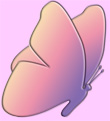Yoga Glossary D–H |
|
|
| A–C D–H I–N O–R S–Z |
- Defence Mechanisms:
- Freudian term denoting the things we do to camouflage our feelings and mask our vunerability—to defend ourselves from exposure the way we really feel—this is usually something we are unaware we are doing.
- Dharana:
- Concentration—see eightfold path.
- Dhyana:
- Meditation—see eightfold path.
- Disturbance (emotional):
- In relation to REBT disturbance is an unhelpful and unhealthy state, which has resulted from negative (self-rating) beliefs. It does not mean that the person is unstable but instead means that the person is unable to function at their optimal level of contentment because they are experiencing unhelpful thoughts. In contrast, dissatisfaction is a healthy and helpful state that prompts or motivates us.
- Duhkha:
- Pain.
- Ecstasy:
- Derived from a Greek word meaning to stand outside oneself—involves a significant shift in one's state or sense of identity—to transcend the ego and reach a state of blissfulness—samadhi.
- Ego:
- One of Freud's three states or levels of mind—the 'reality principle'.
- Eightfold Path (ashta-anga-yoga or eight limbs of yoga):
- Yoga is a process of awakening. This is achieved through a process of withdrawal from the forms of nature, to an inner space of peace and silence. Patanjali's Classical Yoga follows the eightfold path to achieve this aim—yama (moral observance), niyama (self-restraint), asana (posture), pranayama (breath control), pratyahara (sense withdrawal), dharana (concentration), dhyana (meditation) and samadhi (ecstasy).
- Habit-mould:
- Is a term used by Earnest Wood in Practical Yoga (1951) to describe kleshas (obstacles/afflictions).
- Hatha:
- Forceful—comes from ha reflecting the sun (surya) and tha reflecting the moon (candra). Hatha Yoga works with ida and pingali the female and male aspects of the subtle body (the subtle body or pranic body is made up of 72,000 nadis (nerve endings) and ida and pingala are part of the tree primary nadis—they traverse sushumna (the third primary nadi) which runs along the spine. On this subtle level, ida (which runs from the base chakra [or energy centre] along the spine to the left nostril) reflects the passive moon state, the calming and the parasympathetic division of the autonomic nervous system (the relaxation phase).
- Happiness:
- The dictionary describes happiness as 'the pleasurable experience that springs from possession of good' or 'the gratification of desires' (573). We can see from this definition how the notion of happiness has come to be associated with selfishness and greed—with 'the satisifaction of our desires'. This idea of happiness is a misconception. Happiness itself is a good thing—it promotes good-will. But like any word, its meaning is not fixed, it only has the meaning we give it. Happiness, as a feeling, is different for all of us, depending on what we associate with its achievement. This is where we get ourselves into trouble—we think we need a particular thing in order to be happy. In other words, we think we need a reason to be happy. The kind of happiness that is sustainable, however, is the kind that doesn't rely on external gratification.
- Homeostatis:
- A medical term used to describe the body's perfect state of wellbeing or balance—where all the bodily functions are working in balance.


